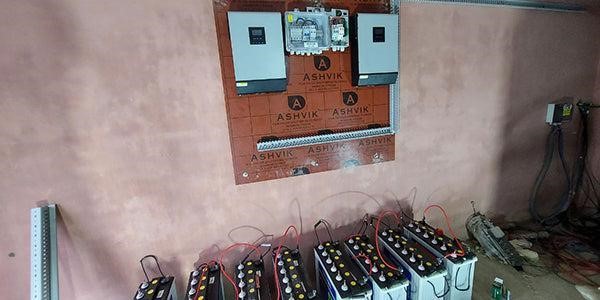If you are looking for the latest technologies used in manufacturing solar inverter batteries, then this article will be very helpful for you. The current market demands from various manufacturers and brands demands that all the solar inverter batteries should meet more than one criteria at a time. Solar inverter batteries store, regulate and transform the direct current (DC) power from photovoltaic cells into alternating current (AC) for all aspects of house lighting, solar water heating and other grid-connected use.
Solar inverter battery for home is now available in various specifications to suit the need of customers. This wide range of solar inverter batteries is due to technological advancements in manufacturing procedures of them. The technologies used for manufacturing these batteries are pretty advanced and require a strong understanding for its functioning. So, this short article will help you understand what is going on inside a modern solar inverter battery and how it can be used for your energy needs.
In your opinion, what do you see as the future of inverters?
Which additional functions (such as managing energy use on the grid, in the home, or in a lithium battery) will inverters play in the future?
The two main tendencies are as follows. Inverter functionality is expected to increase, which brings us to the first trend. The inverter’s primary purpose of converting DC to AC is where the term came from, although its importance in PV systems has grown considerably over time. As the system’s “brains,” modern inverter systems handle everything from communication to smart energy management to storage to grid interface to safety. Inverters will play an increasingly important part in the management of smart homes, including tasks like load control while switching between energy sources. Smart inverters, on a larger scale, may make it possible to have several smaller power plants rather than one massive one.
The second pattern is that as technology advances, we will have to build inverters that have a higher power/kg ratio while being smaller in size. The size and price of inverters are expected to decrease. To keep up with these rising expectations, the sector will need to constantly innovate.
Is the industry still reliant on government backing in the form of subsidies etc. or is it self-sustaining at this point?
There are two key obstacles that must be overcome before solar deployment can expand. To begin, we must accelerate the spread of grid parity to other nations. Second, we must address solar energy’s fundamental challenges, including the inconsistency of solar power and the vulnerability of electrical grids. It has been argued by many experts in the solar sector that government subsidies and incentives are the most effective approach to make solar power a more financially viable option. There are two main reasons why this view worries me. First, many developing nations with rising energy demand cannot afford to give such subsidies, and the people typically lacks the financial resources to invest in alternative energy. Subsidies do not work because all they do is shift the responsibility from the private to the public sphere without really addressing the underlying issue. Secondly, subsidies cease, often unexpectedly, which may generate instable market circumstances. However, the inventiveness of the human intellect can only lead to progress.


